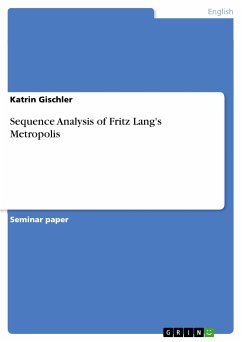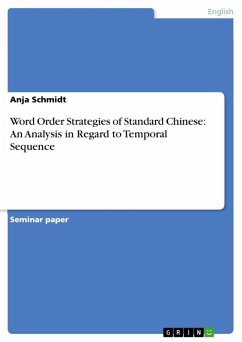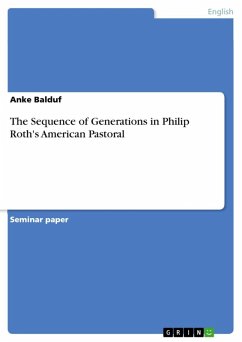Seminar paper from the year 2005 in the subject English Language and Literature Studies - Literature, grade: 65%, University of Reading, course: Film Narrative, language: English, abstract: Urban modernity, Berlin's "Golden Twenties", the cinematographic city -no other movie evokes these clichés more vividly than Fritz Lang's Metropolis. Since its publication in 1926/27 it has ever again been praised but also brought a lot of criticism among the audience and reviewers.Metropolisstands out from the fantastic film of the silent film era and introduced a new genre in Germany, science-fiction. It compounds motifs of expressionism, "Neue[r] Sachlichkeit", and pulp fiction. Moreover, there are elements of film noir, which connects elements of expressionism and French poetic realism. These elements became obvious in the Father-Son conflict, the existence of a double, the architecture, and the camera-and lighting effects (bright/ dark contrasts/ low-key lighting, iris shatter). Lang manipulated the lighting in Metropolis to reflect harsh contrasts between humanity and technology. Lang's mammoth piece still has a huge impact on contemporary film as we can see inStar Wars(1977),Blade Runner(1982), and The Fifth Element(1997). In this following paper I'm going to analyse a ten-minute sequence that starts in the eternal garden and ends after the explosion in the underworld of the workers. I will focus my analysis on editing, i.e. camera shots, and lighting since both parts play a very- if not the most- important role for the narrative ofMetropolis.Moreover, the camera shots used and some invented inMetropolisgave way for the following and contemporary films. In this piece of work the original version ofMetropolis-which has been restored by the Friedrich-Wilhelm Murnau foundation- and was seen in the premiere on 10 January 1927, serves as a primary source.
Dieser Download kann aus rechtlichen Gründen nur mit Rechnungsadresse in A, B, BG, CY, CZ, D, DK, EW, E, FIN, F, GR, HR, H, IRL, I, LT, L, LR, M, NL, PL, P, R, S, SLO, SK ausgeliefert werden.
Hinweis: Dieser Artikel kann nur an eine deutsche Lieferadresse ausgeliefert werden.









